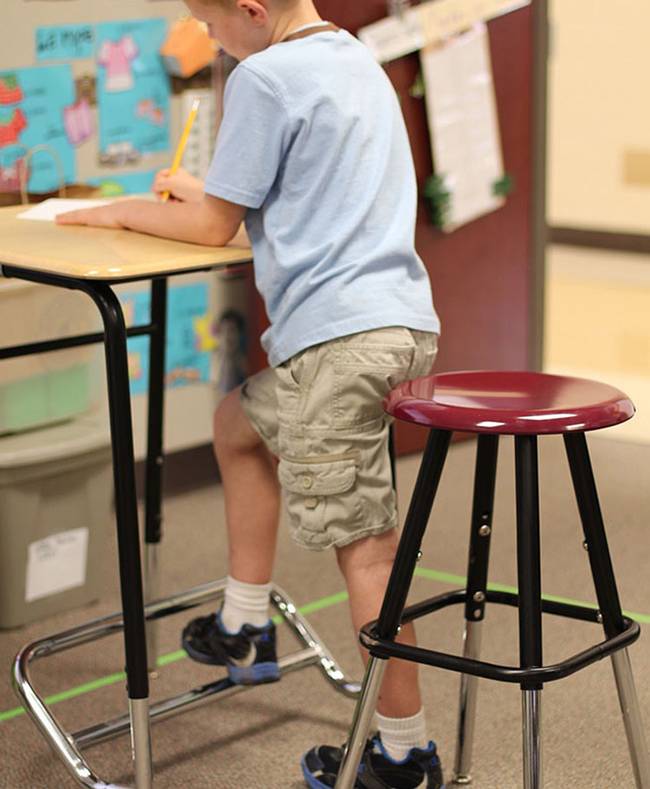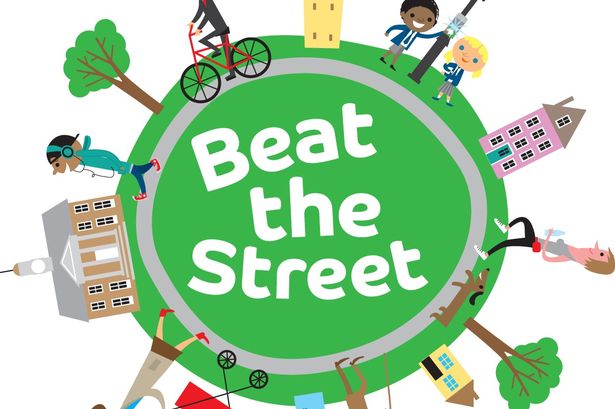Sport and Exercise Medicine: The UK trainee perspective – A BJSM blog series
By Dr Farrah Jawad
 Active Movement is an initiative that focuses on simple behaviour changes to empower people to sit less and move more. Their aim is to: (i) integrate low level activity into our daily lives, (ii) make movement accessible for all, without requiring special equipment or skills and (iii) remove the perceived barriers that may preclude some people from participating in sport or going to the gym, for example. The Active Movement team has recently been involved in teaching this concept to nursery and primary school children and plan to extend this to secondary schools.
Active Movement is an initiative that focuses on simple behaviour changes to empower people to sit less and move more. Their aim is to: (i) integrate low level activity into our daily lives, (ii) make movement accessible for all, without requiring special equipment or skills and (iii) remove the perceived barriers that may preclude some people from participating in sport or going to the gym, for example. The Active Movement team has recently been involved in teaching this concept to nursery and primary school children and plan to extend this to secondary schools.
On Friday 27th November 2015 at the Institute of Sport, Exercise and Health in London, Active Movement held a conference entitled “Innovation in combatting children’s inactivity and obesity.” Below are some brief educational points from the event:
“Innovation in combatting children’s inactivity and obesity” – Paul Chadwick
- We cannot change behaviour without first understanding the driver of the behaviour
- The Behaviour Change Wheel1 has universal applicability to any behaviour and can be a useful tool to facilitate behaviour change
- Behaviour change requires capability (physical and psychological), motivation and opportunity; for increasing physical activity which might mean safe spaces, cues and reminders to be active, credible role models, and so on.
- Innovation does not have to mean something completely new, rather we can innovate through what we already know.
“Innovation and collective wellbeing” – Linda Baston-Pitt
- The early years are a critical period in the establishment of sedentary and active behaviours, so shaping behaviour at a young age is very important.
- Children’s wellbeing and future development is dependent on having a high parent and staff well-being and an emotionally positive environment.
- A bottom-up approach may work best – teaching children directly in their schools, in their early years, should help them grow into active, less sedentary adults.
 “A review of Beat the Street – getting more children active within the school and community” – William Bird MBE
“A review of Beat the Street – getting more children active within the school and community” – William Bird MBE
- Exercise has positive effects on executive function and mathematics achievement in children;2,3 we do not have to decide between physical activity and academic achievement as the two go hand in hand.
- The theme of the Beat the Street initiative was to transform the streets into an activity centre. Children and adults were given smart cards and sensors were put up across the city in Reading, England (approximate population 207,000). Health messages were avoided, and people were encouraged to travel around the city to touch the sensors with their smart cards in order to gain points to win prizes. Around 39% of the population took part (approximately 10,000 children and 13,000 adults).
- Beat the Street participants reported that their biggest reasons for taking part were “feeling healthier,” “getting fit,” and “having fun.”
- The organisers found that participants were likely to stay active at 3 months (which they defined as achieving 30 minutes physical activity five times a week) and after one year, there also seemed to be retention of physical activity levels.
- Beat the Street has been rolled out in Thurrock, Norwich and Cambridge and will be coming to further areas in the UK in 2016.
The impact of changing the learning environment to improve health and learning – Stacy Clemes
- Sedentary behaviour is common and automatic due to our lifestyle. Nearly 2/3 of 9-10 year olds spend 2/3 of the day sitting4.
- Sedentary behaviour tracks from childhood to adulthood.
- Sit-to-stand desks in primary schools have been shown to be effective in increasing energy expenditure5,6 and standing and movement during the school day7.
- A small scale study took place at a primary school in Bradford, England. Baseline data showed that children spent around 9.5 hours a day sitting on their school days (69% of their wake time), and 10.5 hours sitting on non-school days (70% of their wake time). Around 70% of class time was spent sitting and 71% of after school time was spent sitting.
- Children were exposed to sit-to-stand desks for an hour each day and after this intervention, time sitting decreased and time spent stepping increased significantly.
- A comparative study in Melbourne, Australia saw similar effects.
- The BBC reported on the study in Bradford and you can watch the two minute clip via this link: http://www.bbc.co.uk/programmes/p0397kk0.
Active movement – innovation in behaviour change – Mike Loosemore and Peter Savage
- Most children are active not as a learned behaviour but instinctively.
- Active Movement aims to establish low level activity as normal practice by engaging with early years children to integrate movement into the daily routine. There is an emphasis here on activity not being a “bolt-on extra” for busy teachers to try to incorporate into the day but on physical activity being a natural, integrated part of the day.
- Active Movement has given nursery and primary schools materials on how to increase their physical activity throughout the day and does this with the use of characters as role models (“Sid”, who sits, and “Stan”, who stands). Staff working at the schools were also given material about the benefits of physical activity and how they can increase their own levels of activity, thereby making them into physical activity role models too.
Leyf (London Early Years Foundation) Nurseries – June O’Sullivan MBE
- Children are the litmus test – if anything is going wrong in our society, it is first evident in children.
- 25% of British children are overweight by the time they start primary school.
- 1,000,000 children in the UK go to nursery each day – there is opportunity to intervene by entering into pedagogical conversations with parents, harnessing “Pester Power,” championing outdoor play, good food procurement and cooking skills in order to facilitate positive behaviour change.
The event was a chance to consider different strategies of reducing sedentary behaviour in our communities, emphasising the concept that innovation does not need to be something completely new, rather harnessing what we know already and thinking of simple, effective ways of implementing change that involves whole communities.
References
- Michie, S, van Stralen, M, West, R (2011). The behaviour change wheel: A new method for characterising and designing behaviour change interventions. Implementation Science 2011, 6:42 doi:10.1186/1748-5908-6-42
- Davis CL, Tomporowski PD, McDowell JE, et al. Exercise Improves Executive Function and Achievement and Alters Brain Activation in Overweight Children: A Randomized Controlled Trial. Health psychology : official journal of the Division of Health Psychology, American Psychological Association. 2011;30(1):91-98. doi:10.1037/a0021766.
- Tomporowski PD, Davis CL, Miller PH, Naglieri JA. Exercise and Children’s Intelligence, Cognition, and Academic Achievement. Educational psychology review. 2008;20(2):111-131. doi:10.1007/s10648-007-9057-0.
- Steele, Rebekah M., et al. “Targeting sedentary time or moderate-and vigorous-intensity activity: independent relations with adiposity in a population-based sample of 10-y-old British children.” The American journal of clinical nutrition 90.5 (2009): 1185-1192
- Benden, M. E., J. J. Congleton, and R. Fink. “An in-situ study of the habits of users that impact office chair design and testing.” Journal of the Human Factors and Ergonomics Society 1.53 (2011): 38-49.
- Benden, M, Zhao, H, Jeffrey C (2014). The Evaluation of the Impact of a Stand-Biased Desk on Energy Expenditure and Physical Activity for Elementary School Students. J. Environ. Res. Public Health 2014, 11(9), 9361-9375; doi:10.3390/ijerph110909361
- Lanningham-Foster, L., Foster, R. C., McCrady, S. K., Manohar, C. U., Jensen, T. B., Mitre, N. G., Hill, J. O. and Levine, J. A. (2008), Changing the School Environment to Increase Physical Activity in Children. Obesity, 16: 1849–1853. doi: 10.1038/oby.2008.282
Further reading
Hunter RF, de Silva D, Reynolds V, Bird W, Fox KR. International inter-school competition to encourage children to walk to school: a mixed methods feasibility study. BMC Research Notes. 2015;8:19. doi:10.1186/s13104-014-0959-x.
W J Brown, A E Bauman, N Owen. Stand up, sit down, keep moving: turning circles in physical activity research? Br J Sports Med 2009;43:86-88 doi:10.1136/bjsm.2008.055285
Clemes, S, Barber, S, Bingham D (2015). Reducing children’s classroom sitting time using sit-to-stand desks: findings from pilot studies in UK and Australian primary schools. J Public Health first published online June 14, 2015 doi:10.1093/pubmed/fdv084
http://www.intelligenthealth.co.uk/
http://www.activemovement.co.uk/
Dr Farrah Jawad is a registrar in Sport and Exercise Medicine in London. She co-ordinates the BJSM Trainee Perspective blog.